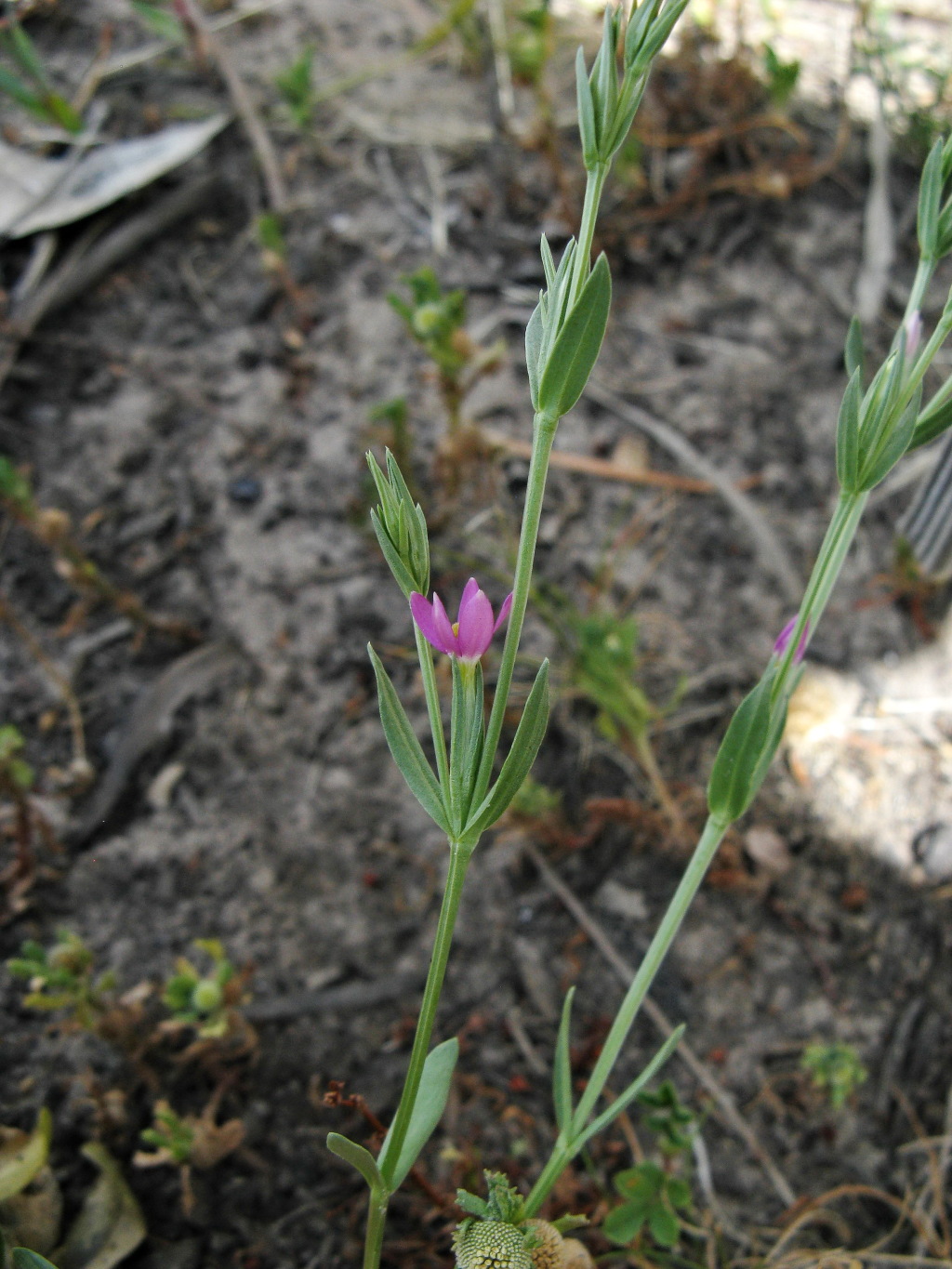Schenkia australis
(R.Br.) G.Mans.Erect or ascending annual, 4–40 cm high, often greyish. Main stem(s) with 3–5 internodes below lowermost branch. Basal leaves present or absent, oblanceolate, obovate or elliptic, 10–25(–40) mm long, 3–6(–15) mm wide, usually smaller toward and within inflorescence. Inflorescence spike-like, simple or branched (sometimes reduced to a single flower), usually leafy throughout. Flowers sessile (rarely shortly pedicellate) between paired floral leaves; calyx-lobes 5–6 mm long; corolla pink or magenta (rarely white), tube 6–10 mm long, lobes 2.5–3.5(–5) mm long; anthers 1.5–2.5 mm long; ovary 4–7 mm long. Capsule c. 8–10 mm long; seeds c. 0.3 mm diam., alveolate, blackish. Flowers Nov.–Mar.
LoM, MuM, Wim, GleP, Brid, VVP, VRiv, MSB, RobP, MuF, GipP, OtP, WaP, Gold, CVU, GGr, DunT, NIS, EGL, EGU, HSF, HNF, OtR, Strz. Widespread but scattered through most of State, common on heavy soils around lakes (often saline), seasonally inundated ground and some near-coastal areas.
A variable species in need of revision. Victorian (and Australian) occurrences may represent plants of both indigenous and introduced heritage. Apparent hybrids with Centaurium erythraea have been noted where both species are present.
Walsh, N.G. (1999). Gentianaceae. In: Walsh, N.G.; Entwisle, T.J., Flora of Victoria Vol. 4, Cornaceae to Asteraceae, pp. 310–321. Inkata Press, Melbourne.
 Spinning
Spinning


